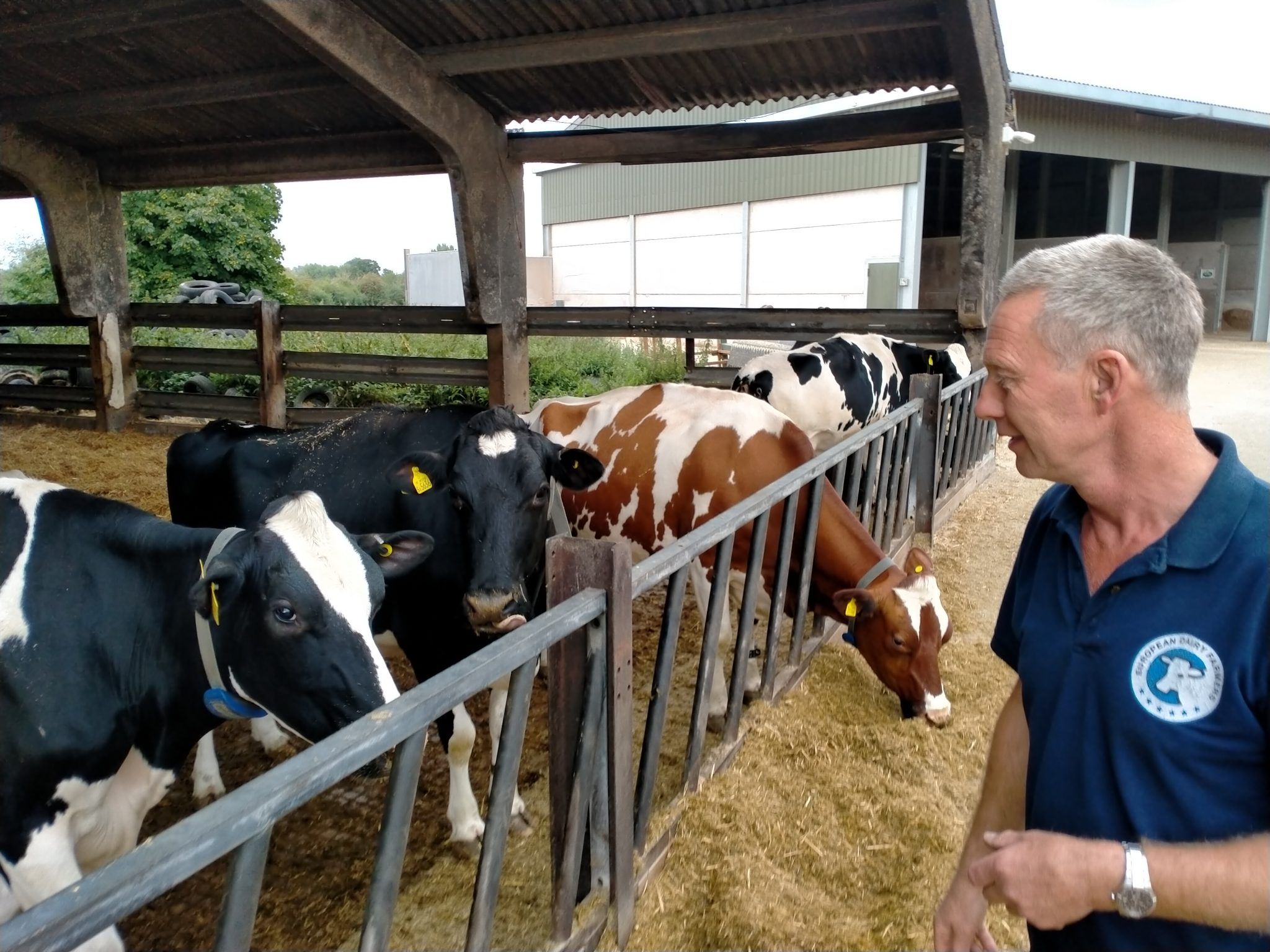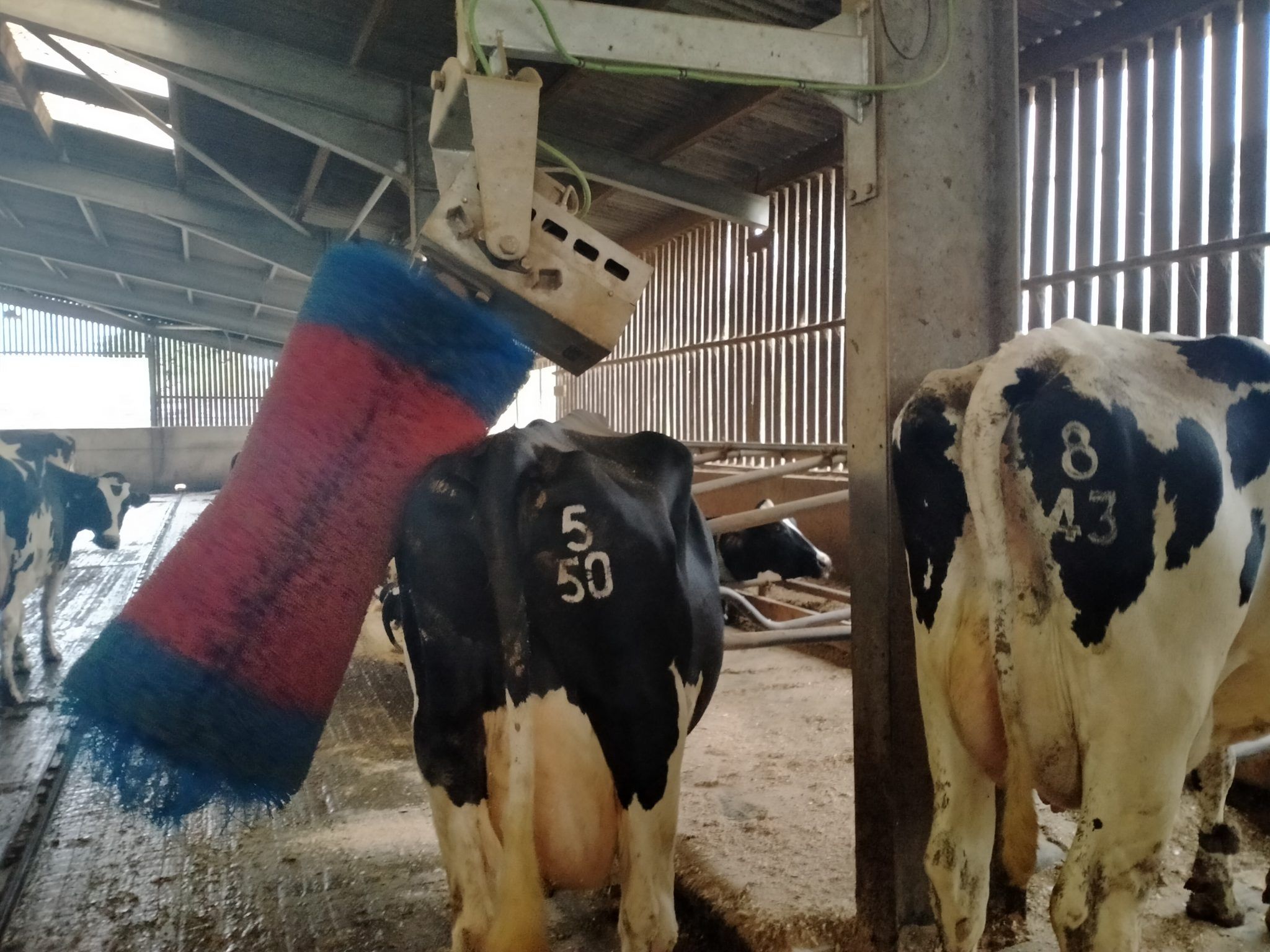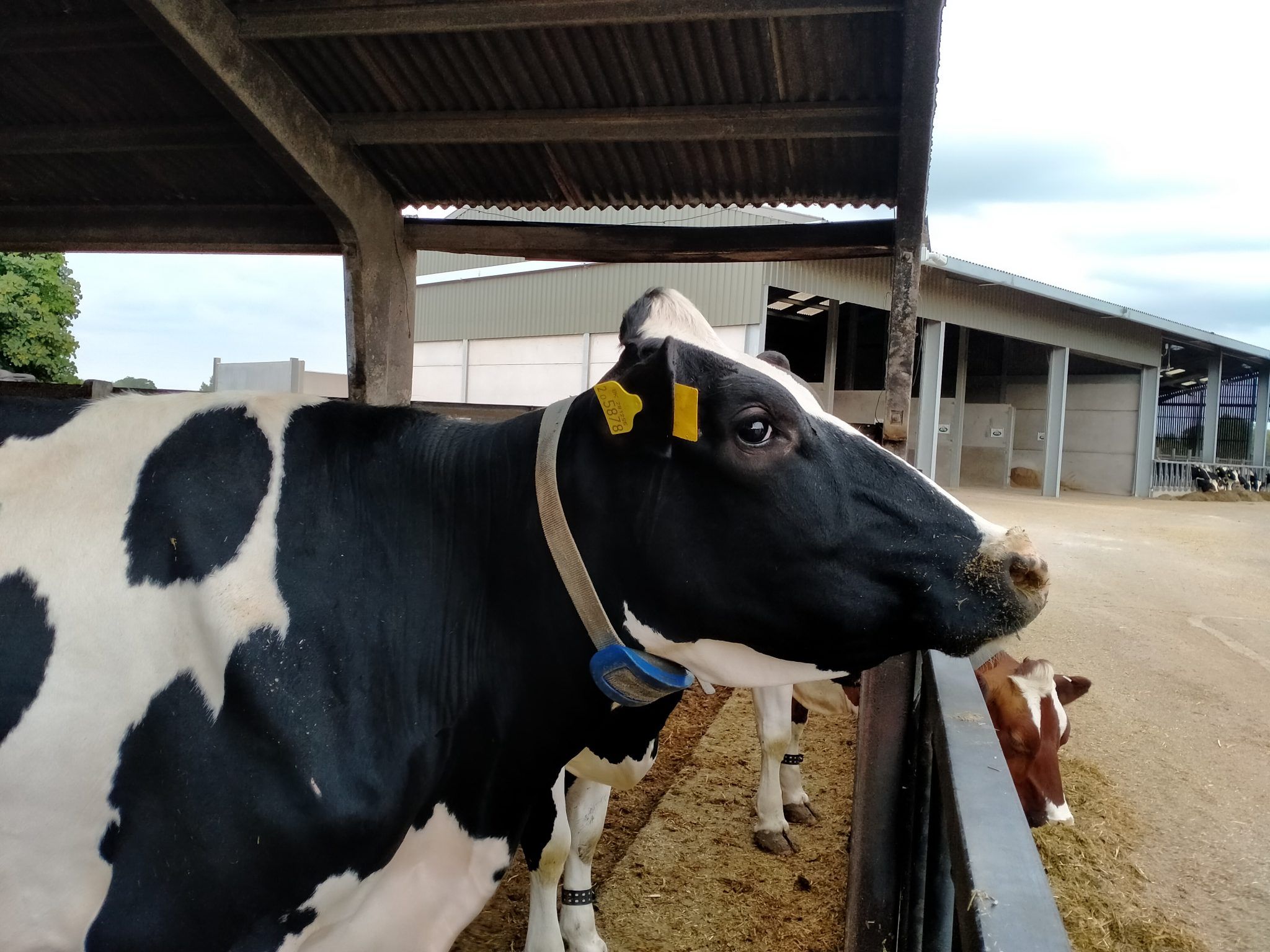Yes, you herd right!
Sitting on high chairs, “like in Baywatch”, a group of scientists observed cows at Neil Dyson’s Buckinghamshire farm – to see if they were happy.
Yes, you herd right. Happy!
For this experiment, the cows got dressed up – in Fitbits – while geo-locators on the ceiling tracked their movements and observers crunched the data to assess things like social exclusion. Brushes were also available for the bovine to bump up against… if they fancied it, and sometimes, apparently, they did.
This bizarre scene was part of research conducted since January by independent experts for dairy cooperative Arla, the findings of which will be used by animal behaviour scientists to develop an algorithm to help farmers determine if their herd is happy. The idea is that the technology will be made available to farmers at Arla’s 2,000 farms, and farms across the country, ushering in, what is hoped to be, a new standard for cow welfare.
Just how the algorithm will work is unknown, with the findings of the study at Dyson’s ‘innovation farm’ not due until January. Dyson, whose 400-strong dairy farm supplies milk to Arla’s Aylesbury dairy along with major supermarkets and McDonald’s, is currently the sole participant.

“This is all about getting right back to the cow to understand what she needs by working really closely with cow behavioural experts,” says Alice Swift, Arla’s head of agriculture. “Intuitively no one knows cows better than farmers, but that’s like them marking their own homework.”
Cows, indisputably, have pretty miserable lives. They’re separated from their young, impregnated by iron rods, packed into trucks before being packed into boxes, by the slice, ready for the pan.
Inside Dyson’s cow shed it’s hard to tell who might be happy, depressed, or even moo-dy. The herd has individually sectioned-off areas to lay down in, but they’re just big enough to contain them and more thought appears to have gone into where they shit – and how easy that will be to clear – than their comfort.
“Not all farmers are interested in trying new things out, but what we’re hoping from this project is that people will consume milk products knowing that a cow has used grass to make that milk,” Dyson surmises proudly, adding: “And they will feel that the cow has had the best life she possibly could.”
However, three-quarters of Dyson’s calves are sent to slaughter a few months after birth.
PETA thinks the idea of upbeat bovine is a moot point.
“PETA acknowledges that there are measures that may make farmed cows less unhappy, but cows cannot be even remotely happy while still being artificially inseminated with a rod stuck inside them, grieving over separations from their beloved calves, being transported on a lorry (a frightening experience in itself) to an abattoir where the smell of adrenalin-laden blood makes their eyes go wide with fear, and then being hung up by a leg and slaughtered,” a spokesperson told JOE.
Farmers, and the agriculture industry, have been fighting an unwinnable PR battle since farming began. They kill animals – 2.6m cattle a year live and die on the production line, according to the Humane Slaughter Association – and the planet – agriculture is responsible for a “substantial proportion” of UK (10 per cent) and global (10-12 per cent) greenhouse gas emissions that cause climate change, according to the government.
But with shed-loads of dairy-free alternatives now available on the shelves – milk sales marginally declining (1.5% from 2015-2019) – and Brits eating less meat (20% less than a decade ago) could the ‘happy cows’ concept be the industry’s first real attempt at changing the narrative around life in the cow-shed?

Mark Rutter, who has been researching cow welfare for over a decade, isn’t dismissive of it, in fact, he thinks Arla’s research has real potential to improve cows’ lives.
“They’re trying to take objective data, and actually use that to help us understand various factors which are relevant to animal welfare,” Rutter, who is a professor of applied animal behaviour at Harper Adams University, explains.
However, he acknowledges that changes in the cowshed might come too late. Cows often carry trauma from birth.
“Early-life experiences can have a big impact on animals later in life, not just their behaviour and welfare, but also production,” he says. (Science tells us cows not separated from their mothers at birth become more social, for instance.)

While the farm findings are yet to be scrutinised, Rutter believes a few basic things would enhance a cows’ happiness – access to indoor and outdoor areas, an area to lay down together socially – and brushes.
By “preference testing”, Rutter said, experts can determine where a cow’s motivation lies, which in turn, helps them work out what they really want.
“We can test whether the cow is willing to get access to something,” he explains, adding: “It doesn’t tell us exactly how they’re feeling, but it tells us how important that is to the cows.”
The professor’s research has proven that cows are willing to work, by walking a little further, to get to a “nice open lying area,” as opposed to lying in cubicles which are typical in farms.
“I’m still arguing that the gold standard is cows should be given free access between indoor housing and pasture, but only really when appropriate. In the winter when the ground is cold and wet the cows themselves don’t really want to go out.”
Rutter concedes the happy cows’ project, at least in part, is about keeping customers happy… and drinking milk and eating steak.
“If the dairy industry wishes to survive for the next 50 years they are going to have to change to meet the demands of consumers,” he says.
That isn’t lost on Swift, Arla’s head of agriculture: “We have to find a way to engage customers and reassure them that they should have no concerns about consuming dairy, dairy’s a force for good, the cows are well cared for, we’re limiting the impact on the environment and all of that,” she says.
The public learning more about the dairy industry, Rutter says, would be “a good thing for the industry”. A difficult concept, given it favours showing, somewhat already ‘happy cows’, – grazing in green fields below blue skies – rather than crammed into cow sheds.
“It’s (the industry) got to have the trust of the people, trust of the consumers, and you can only gain that by being more open about what production involves,” Rutter says, adding that he believes in 30 to 40 years time dairy farming will become “niche”.
Perhaps, only then, will there be more happy cows.
Related links:
Ricky Gervais lobbies for ban on all animal experiments in the UK
Notorious tiger poacher has been caught after 20-year hunt
Animals to be formally recognised as ‘sentient beings’ in UK law










































